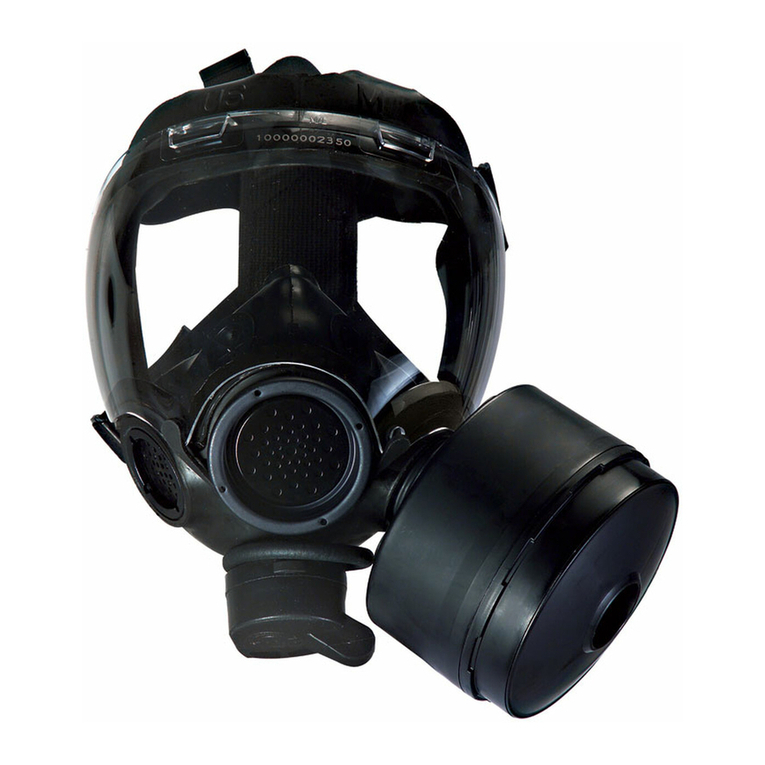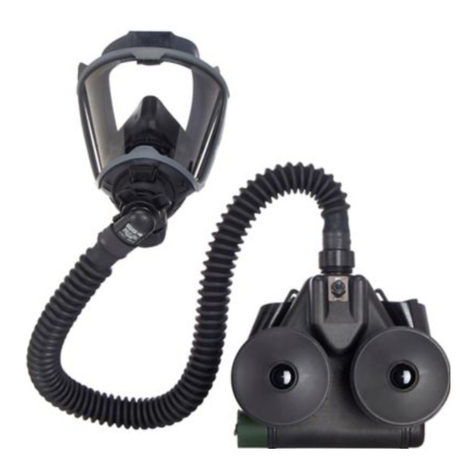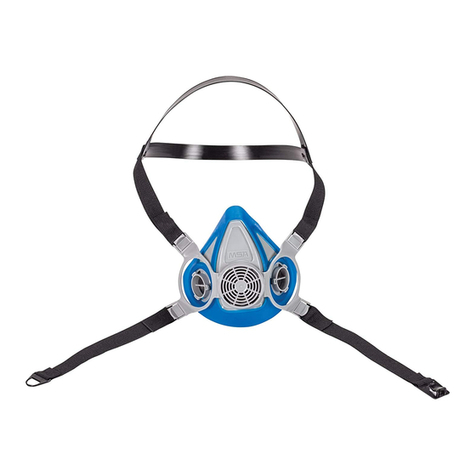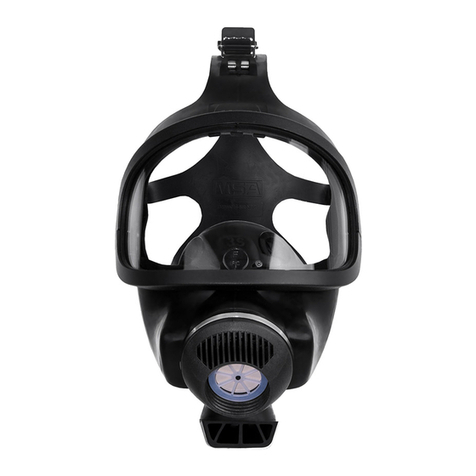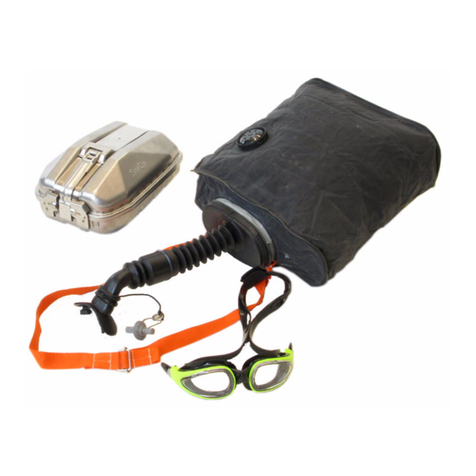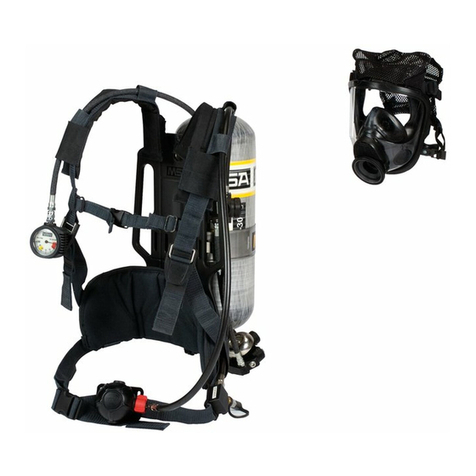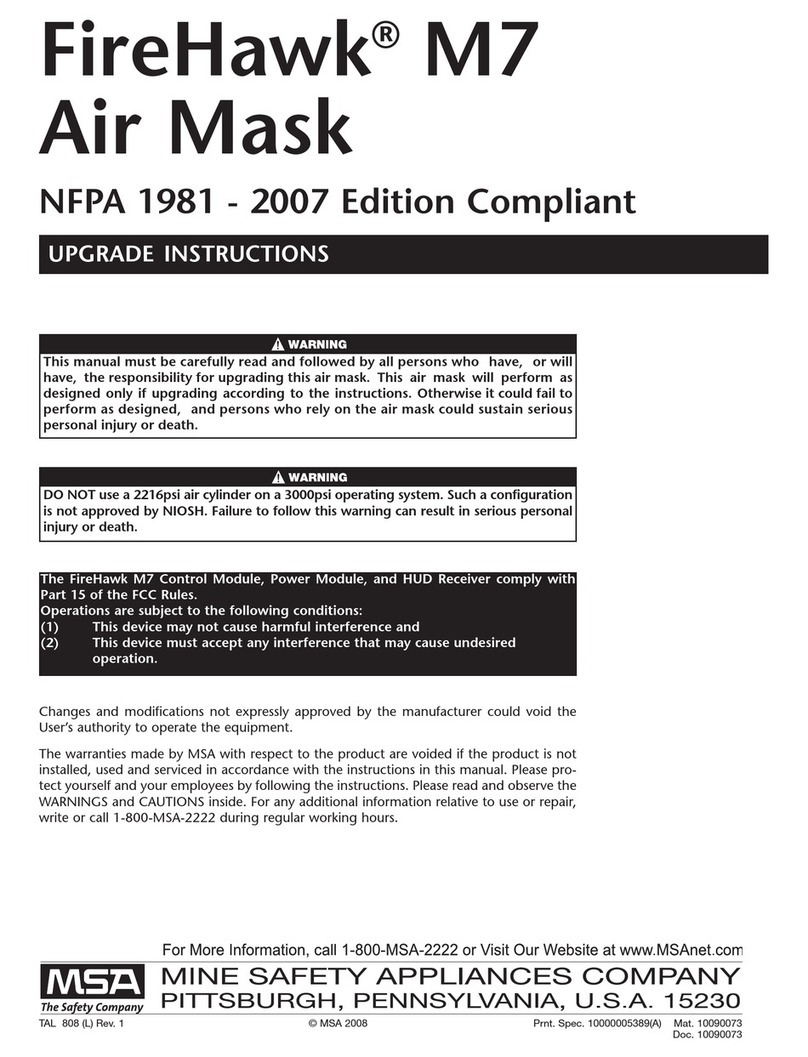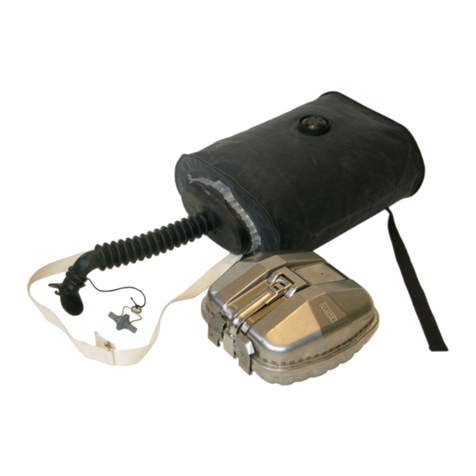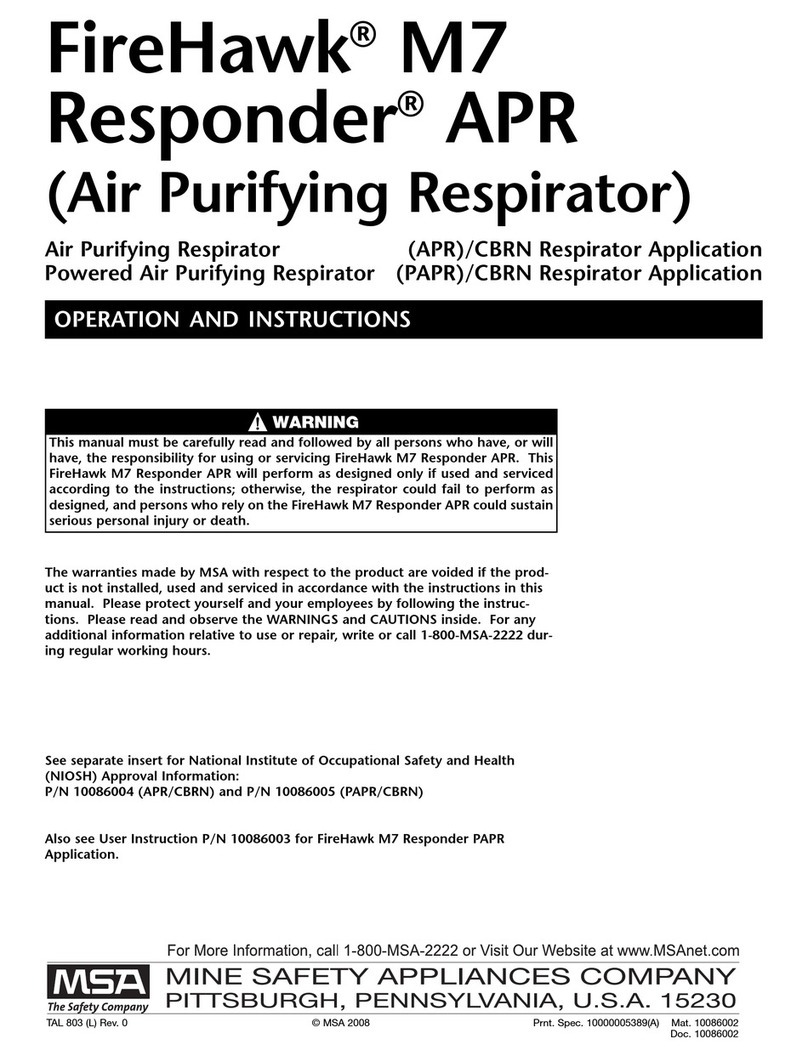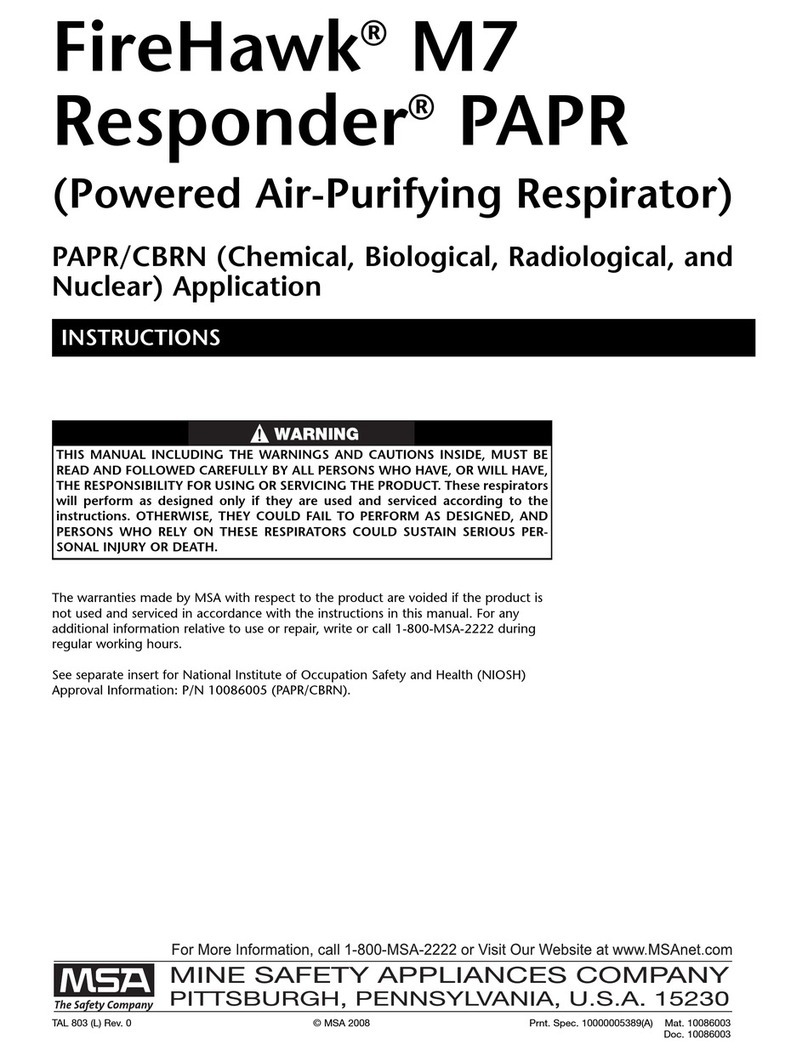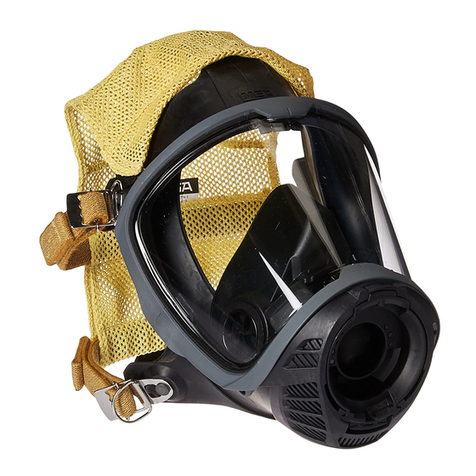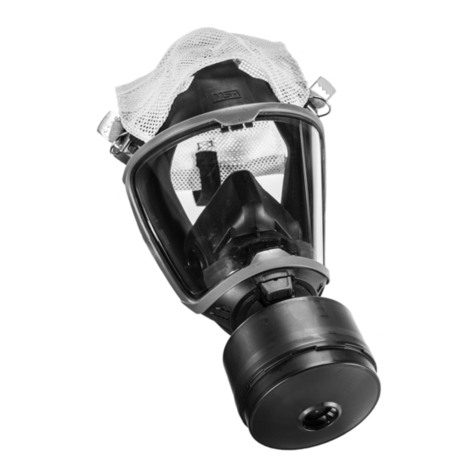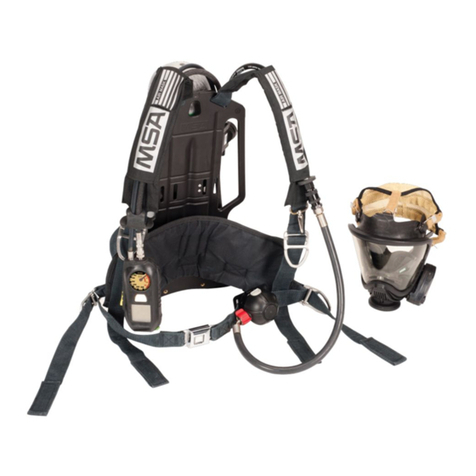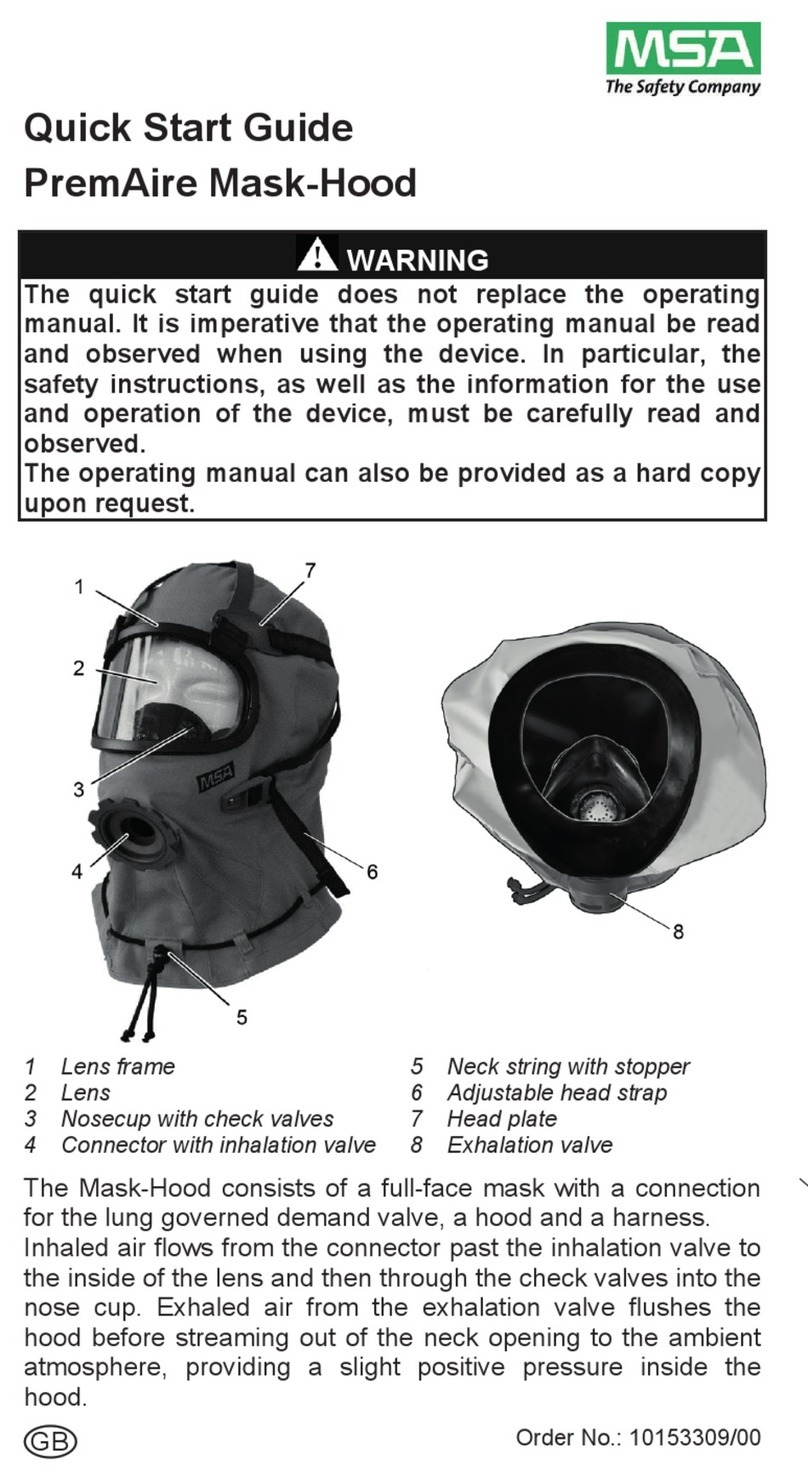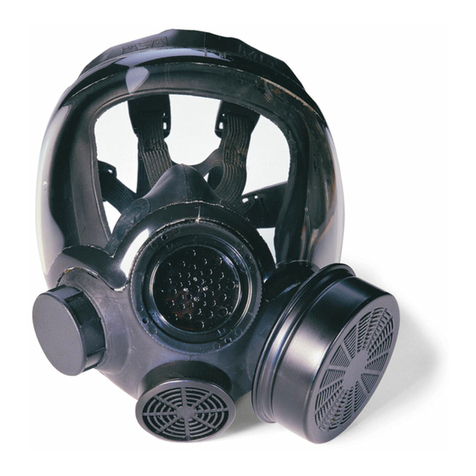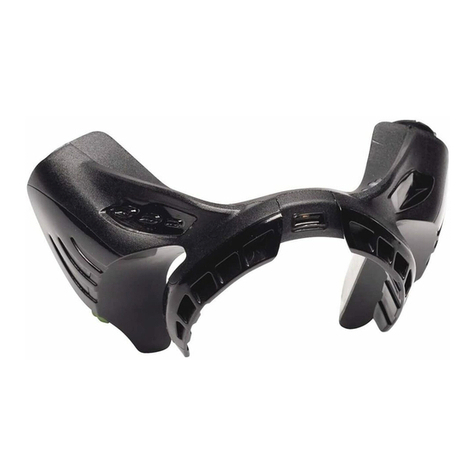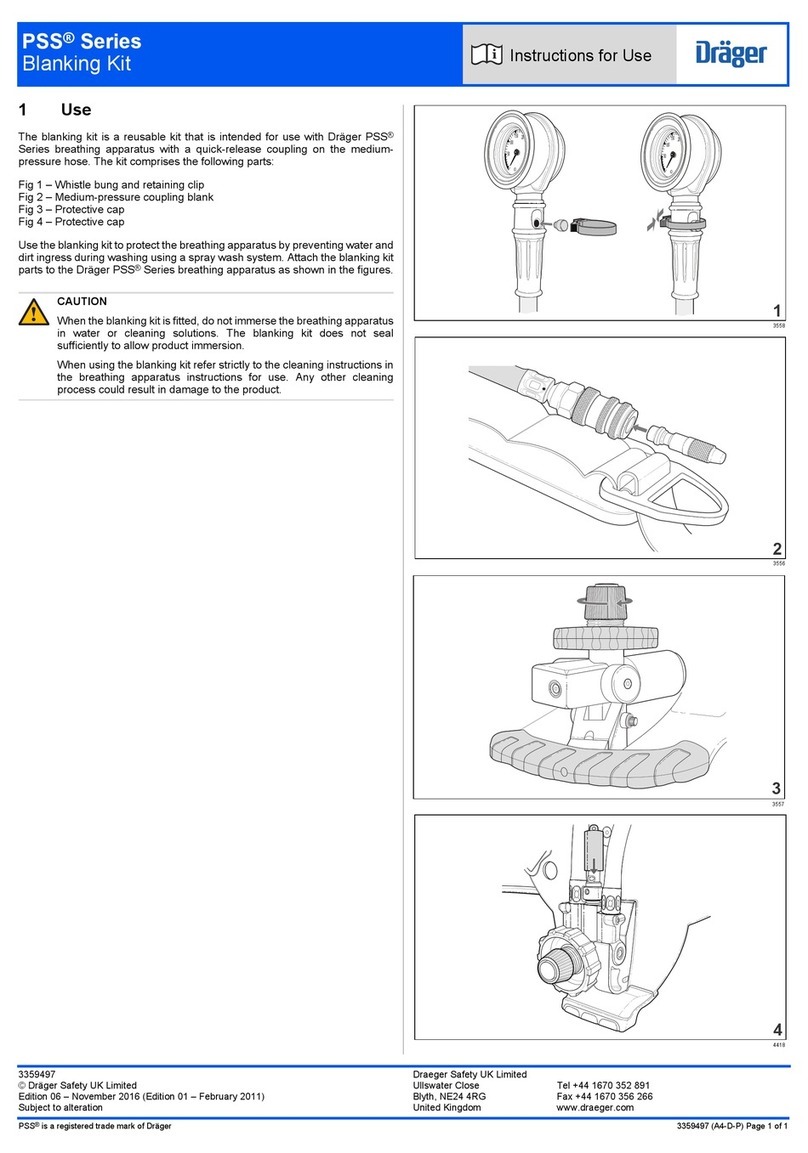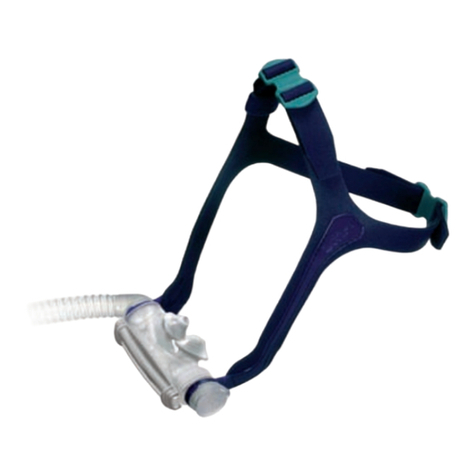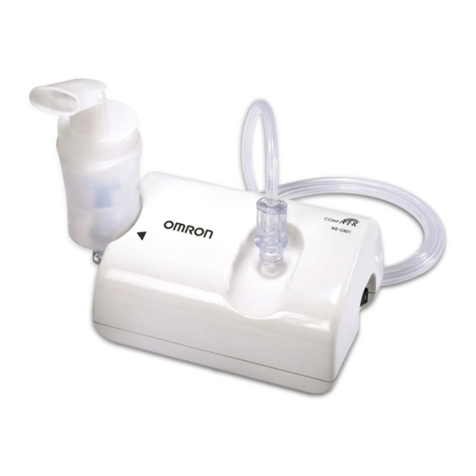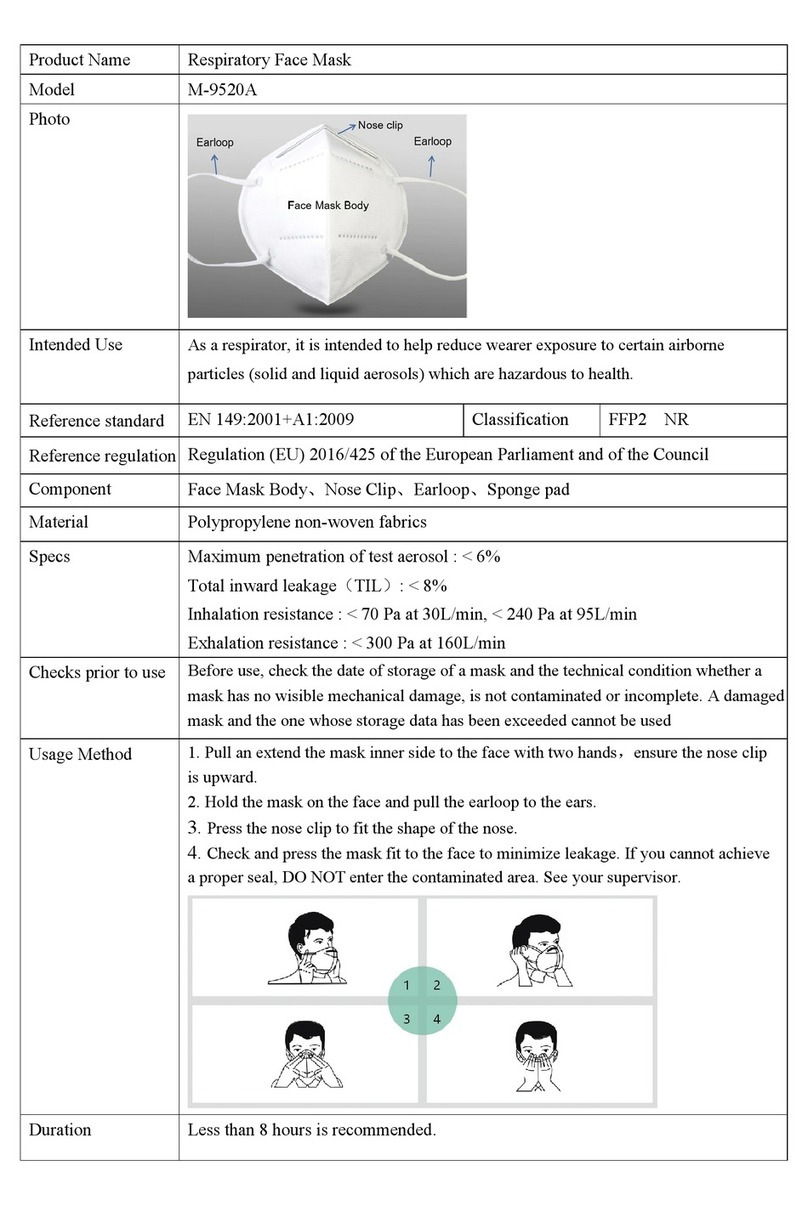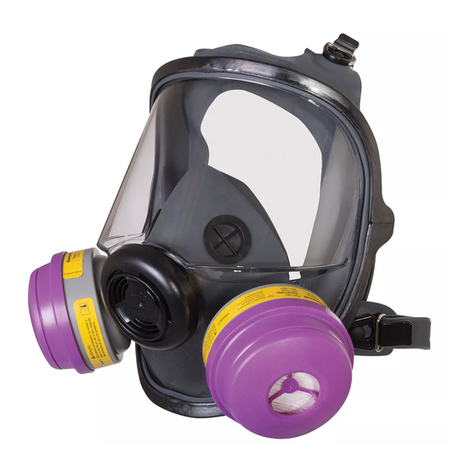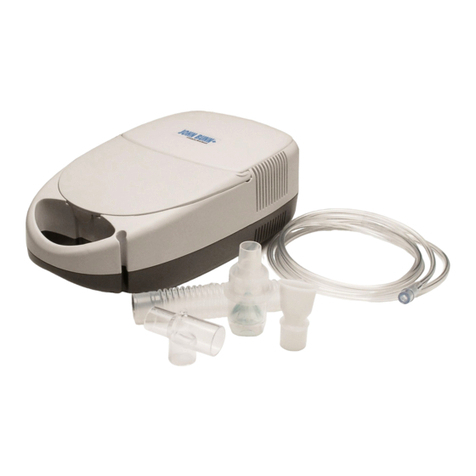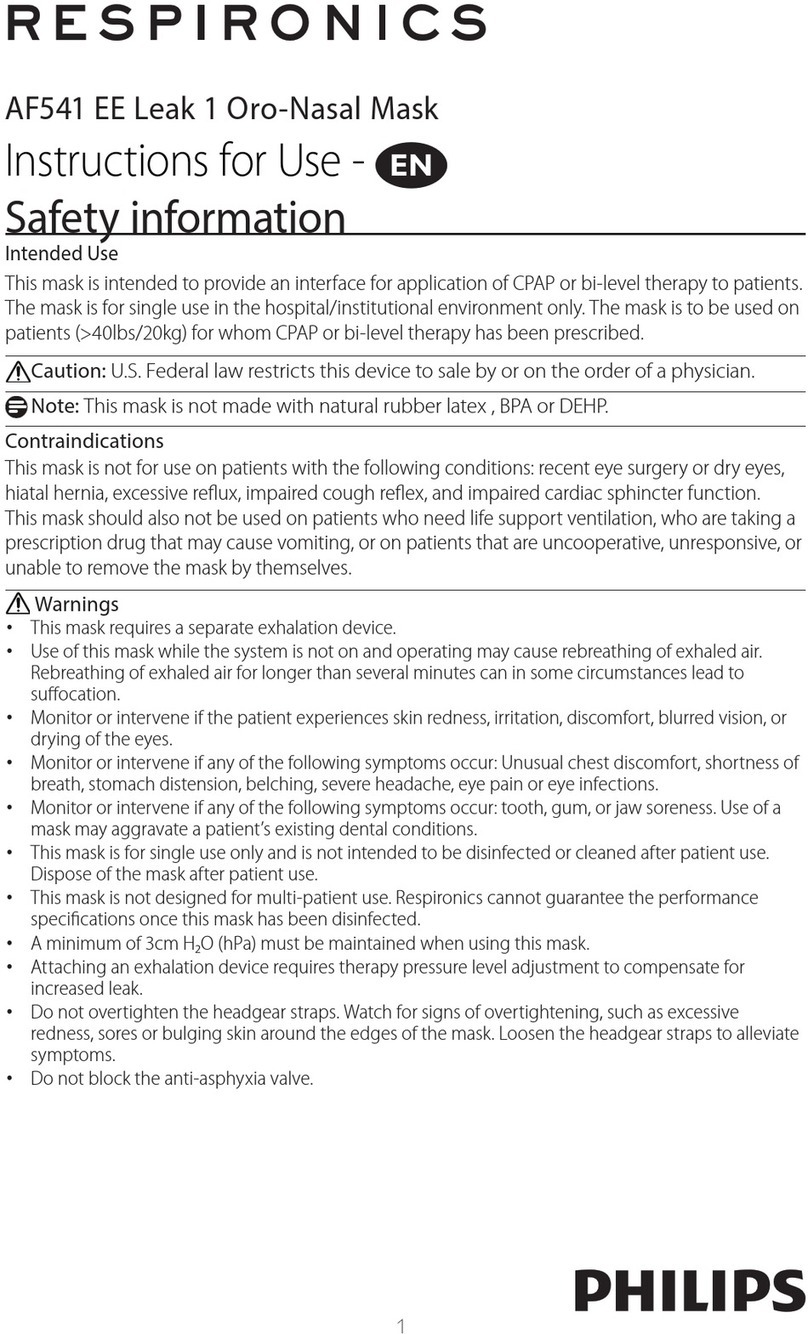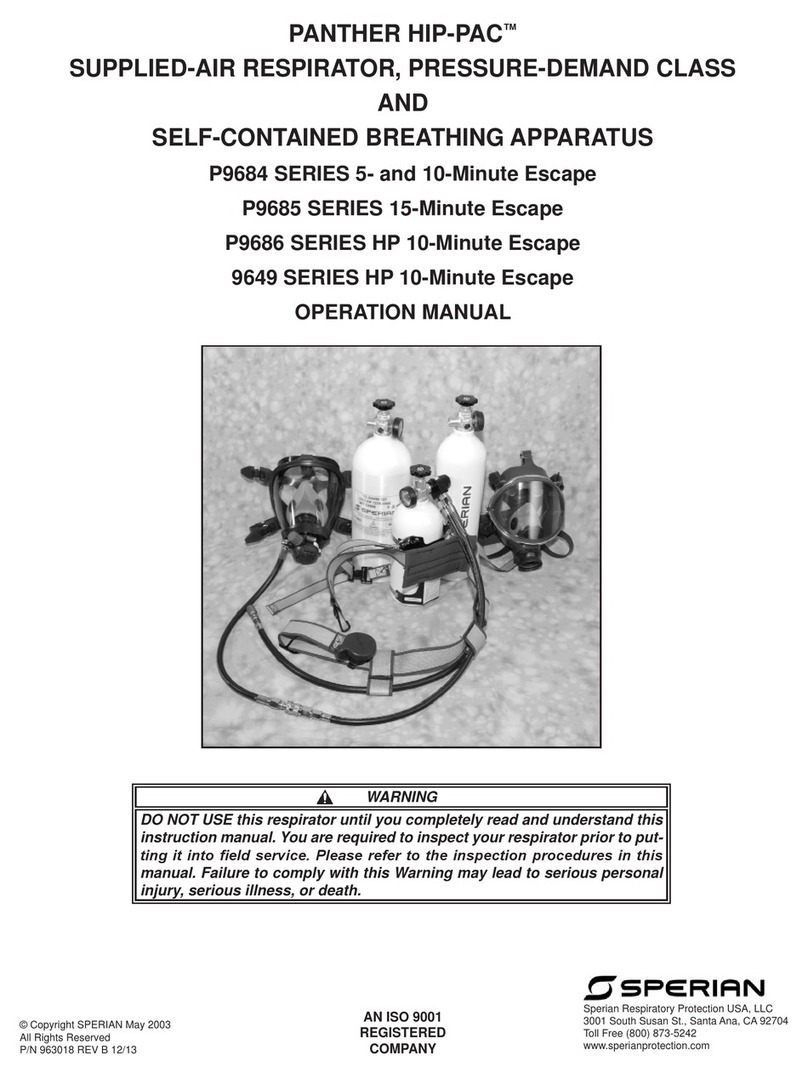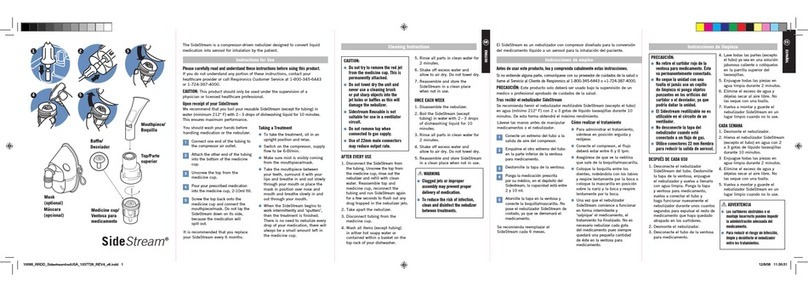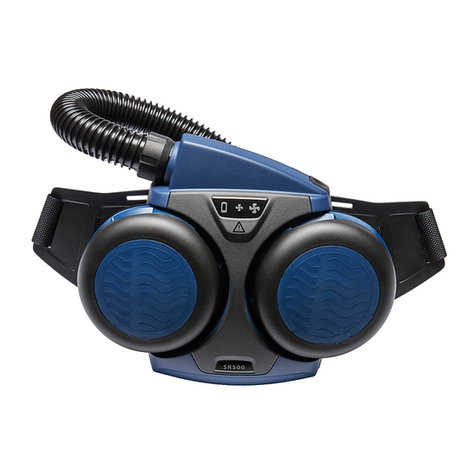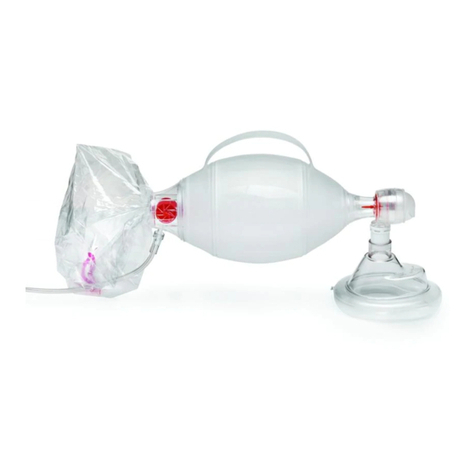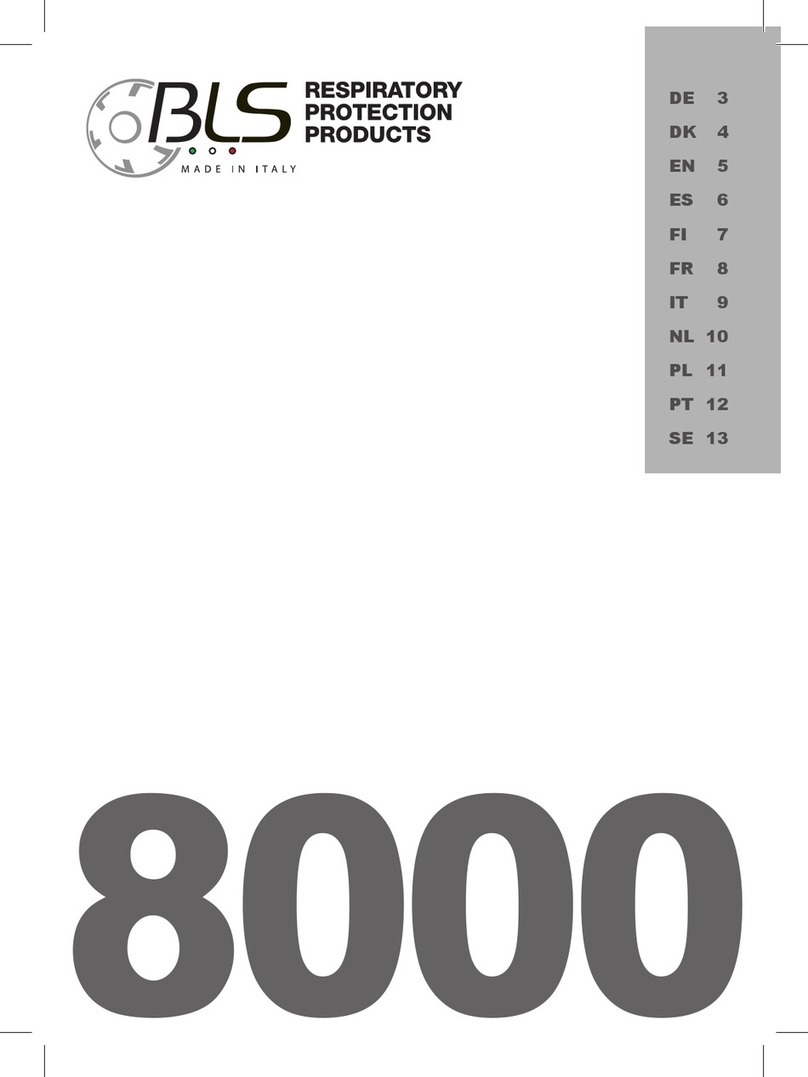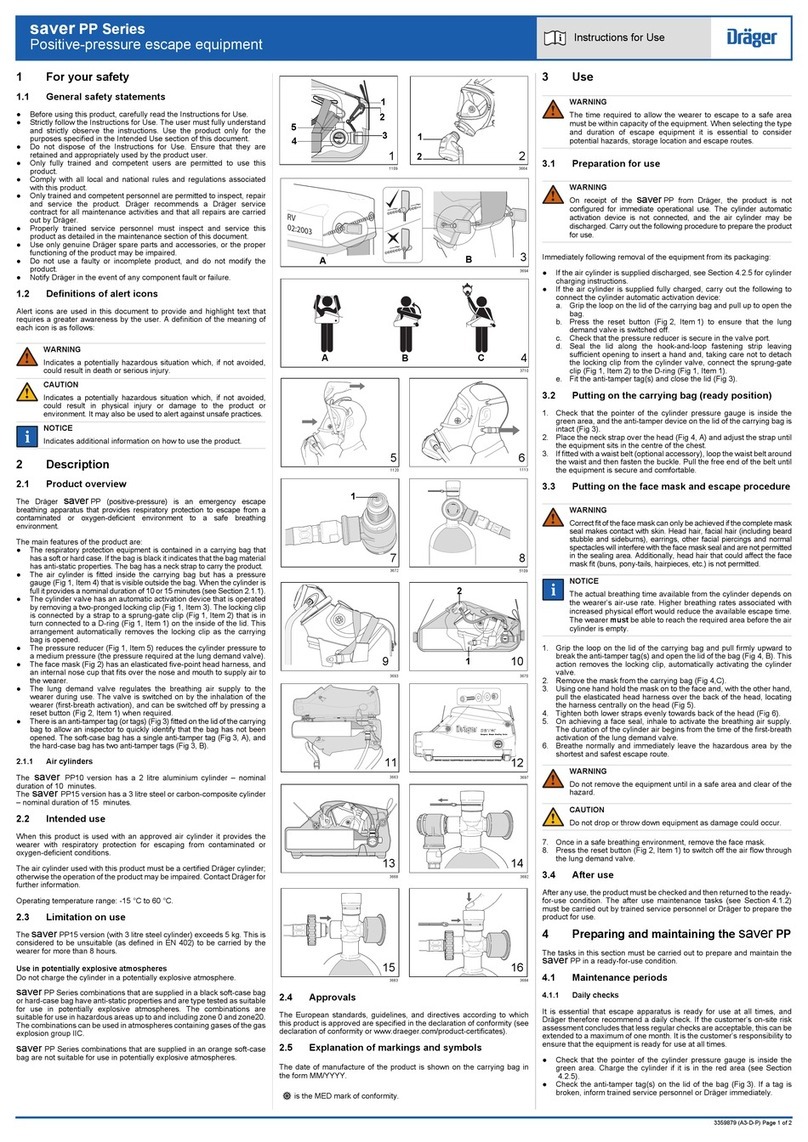
• Go out of a contaminated area immediately if:- Breathing becomes difficult.- Dizziness or other distress occurs.- You
taste or smell a contaminant.- You feel irritation of the nose or throat.- You are instructed to do so by responsible
personnel.
• If you have a beard, large sideburns, or similar physical characteristics that prevent direct contact between your skin and
the sealing surface of the facepiece, this device may not seal correctly with your face (refer to NFPA 1500, Standard on
Fire Department Occupational Safety and Health Program, and ANSI Z88.2, Practices for Respiratory Protection). An
incorrect facial seal can let contaminants leak into the facepiece, decreasing or removing respiratory protection. Do NOT
use this device if such conditions exist.
• Do a negative pressure seal test before each use.
• Individuals who wear eyeglasses must use the G1 spectacle kit to guarantee a correct fit. Ordinary eyeglasses cannot
be worn under the facepiece.
• Do NOT use this device in explosive or flammable atmospheres.
• Do NOT use this respirator, or air filtration cartridges/canisters for protection against exposure to radiation. They may
not supply sufficient protection.
• The respirator can help decrease exposure to airborne biological agents, including the H1N1 (swine) flu virus, avian (bird)
flu virus, other types of influenza, severe acute respiratory syndrome (SARS), or other bacterial or viral biological
agents, and the risk of influenza infection during a pandemic. This respirator does NOT remove the risk of exposure,
infection, illness, or death.
• The respirator is certified by NIOSH to comply with the requirements specified for the designated filter efficiency level.
Applicable authorities have not, however, set a safe level of exposure to biological agents. Therefore, the respirator may
not prevent transmission of the influenza virus.
• Refer to the Centers for Disease Control and Prevention (CDC) at www.cdc.gov for guidance on the use of respirators
to help decrease exposure to viral pathogens or other airborne biological agents in community, home, and occupational
settings. The CDC recommends fit testing, medical evaluations, and training for optimal effectiveness when a respirator
is used in a non-occupational setting. Neglecting these preparatory measures may cause an unsafe condition.
Respirators used in an occupational setting MUST be used in accordance with a complete respiratory protection
program as required by OSHA, which includes proper selection, training, fit-testing, and fit-checking. Detailed
information on a respiratory protection program is available by contacting OSHA or visiting www.osha.gov.
• The CDC recommends frequent hand washing and wearing gloves to help prevent transmission of disease due to
exposure to surfaces where contaminants may be present, and also immediately following removal of the respirator.
• Do NOT remove respirator in contaminated areas. The outer surface of the respirator MUST be treated as if it is
contaminated at all times. A respirator will NOT prevent one from exposure to the flu or other airborne biological agents in
other ways such as by touching the mouth, nose, or eyes with contaminated hands or objects. Biological agents, such
as the flu virus, can be transmitted when infected individuals cough or sneeze and spread virus particles through the air
to exposed surfaces which are touched. Tight-fitting safety goggles, or a full-facepiece respirator, may further help
prevent transmission of viral pathogens or other airborne biological agents.
• The G1 APR Facepiece is equipped with an exhalation valve. The facepiece does not filter air that is exhaled by the user
and this unfiltered air can enter the surrounding environment. Do not use where a sterile field is required without
additional, appropriate source control measures in place. Consult CDC guidance.
• ALWAYS clean cartridge/canister-style respirators before use in accordance with the instructions in this manual.
• This respirator is NOT for use by (a) children or (b) people with a medical condition who may be adversely affected by
using it.
• When filters are used in an application that makes sparks, make sure that the filters are protected by a shield. Sparks
can cause damage to filters and decrease the level of protection.
G1 APR Facepiece 8
1 Safety Regulations US

